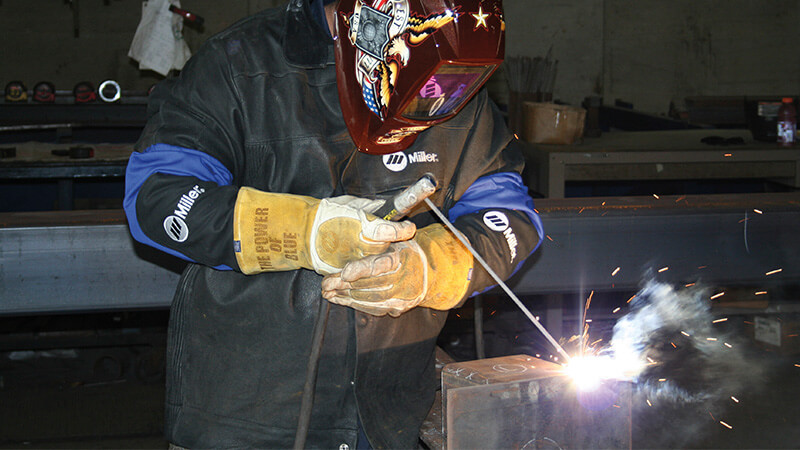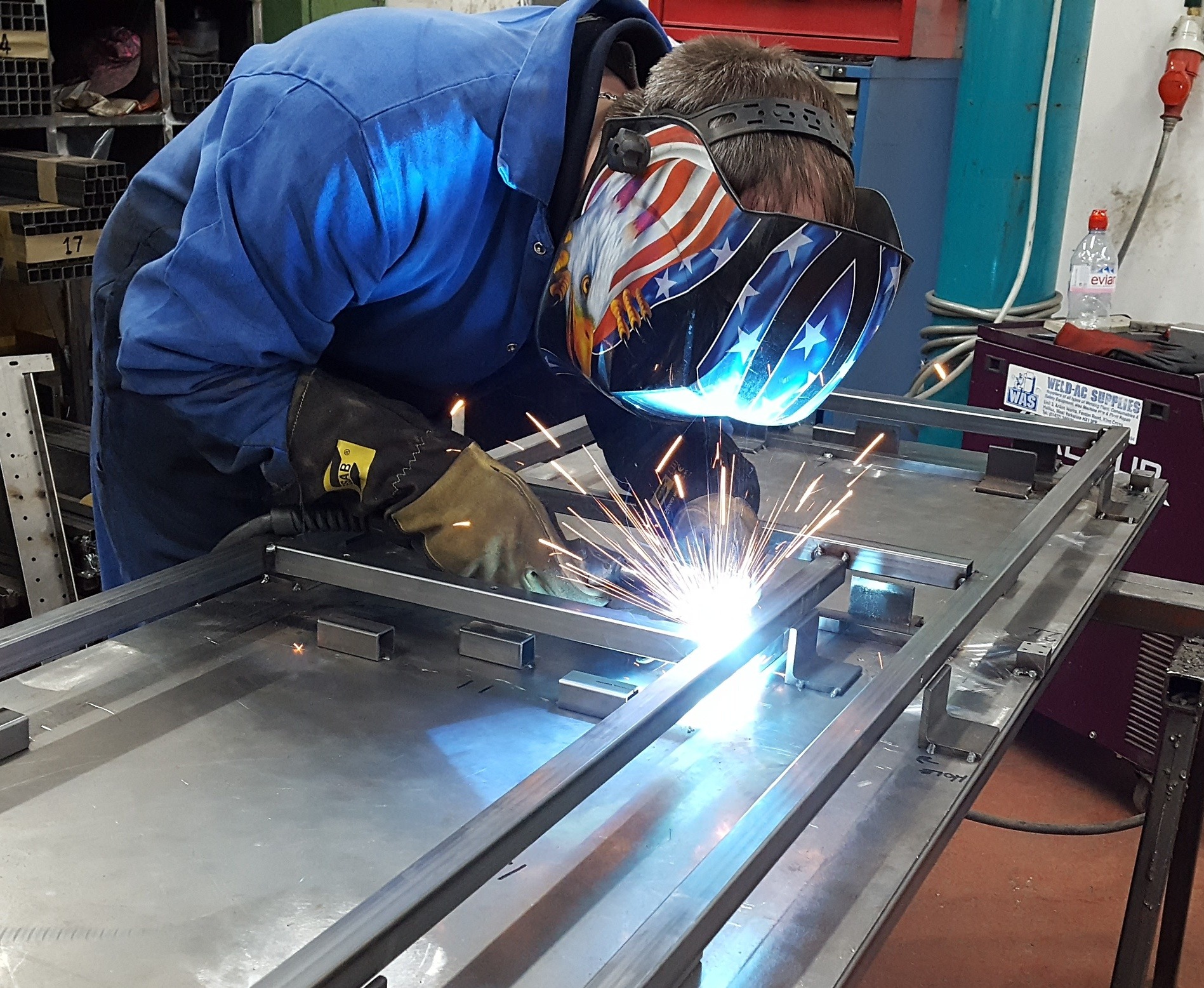Typical Welding Fixing Issues and How to Address Them Successfully
Welding repair services frequently encounter a series of concerns that can jeopardize the honesty of the final product. Usual problems include poor penetration, porosity, and imbalance, to name a few. Each flaw presents one-of-a-kind obstacles that require certain approaches for resolution. Understanding these concerns is crucial for welders aiming to enhance their outcomes and abilities. This conversation will discover these typical welding repair work issues and effective approaches to address them.
Poor Penetration
Insufficient penetration takes place when the weld steel fails to totally fuse with the base product, causing weak joints and possible structural failures. This concern usually comes from inadequate warm input, incorrect electrode angle, or improper welding rate. Welders may experience poor penetration because of a mistake of the required specifications for a certain product thickness or type. Furthermore, contamination on the base product's surface area can impede effective bonding, worsening the issue. To deal with insufficient penetration, welders should guarantee ideal settings on their devices and keep a tidy job surface. Normal evaluation of welds is suggested to recognize any shortages early, enabling timely corrections and the prevention of jeopardized architectural integrity in welded assemblies.
Porosity
Porosity is a common flaw in bonded joints that manifests as tiny gas bubbles entraped within the weld metal. This problem can jeopardize the integrity of the weld, bring about decreased stamina and possible failure under anxiety. Montana Mobile Welding and Repair Welding. Porosity usually arises from contamination, moisture, or improper welding strategies, which enable gases to escape right into the molten weld swimming pool. To address porosity, welders should assure appropriate surface prep work, preserve a tidy workplace, and make use of appropriate welding criteria. In addition, picking the best filler material and protecting gas can reduce gas entrapment. Regular assessment and testing of welds can aid determine porosity early, ensuring prompt rehabilitative activities are taken, thus maintaining the high quality and integrity of the bonded framework
Misalignment
Misalignment in welding can arise from numerous variables, including incorrect configuration and thermal growth. Understanding the origin is crucial for effective resolution. A number of improvement methods are offered to straighten elements and ensure architectural stability.
Reasons for Imbalance
Welding misalignment typically originates from a variety of underlying problems that can compromise structural integrity. One main reason is improper fit-up of parts prior to welding, which can lead to spaces and irregular surface areas. Variants in thermal expansion throughout the welding procedure can likewise lead to distortion, especially if the materials being joined have various coefficients of growth. In addition, inadequate fixturing and clamping might stop working to hold components securely in position, causing movement throughout welding. Poorly maintained tools, including welding devices and devices, might present incongruities in the weld grain, more adding to imbalance. Operator error, stemming from inadequate training or experience, can additionally play a substantial function in producing misaligned welds.

Correction Techniques Offered
Resolving imbalance properly requires a combination of corrective techniques tailored to the details problems available. One typical method is making use of components or jigs to hold components in the correct placement during welding, making sure constant positioning. In addition, preheating the materials can help in reducing distortion and enhance fit-up. For considerable imbalance, mechanical adjustment techniques, such as using hydraulic jacks or clamps, can be employed to fix the placement before welding. Post-weld warm treatment might additionally be necessary to soothe stresses brought on by imbalance. Careful examination and change throughout the setup stage can prevent imbalance concerns from ending up being considerable troubles, advertising a smoother welding procedure and enhancing total architectural honesty.
Distortion
Distortion is an usual obstacle in welding that can develop from different aspects, including uneven home heating and air conditioning. Recognizing the reasons of distortion is necessary for implementing efficient avoidance strategies. Resolving this issue not only boosts structural integrity but likewise enhances the overall top quality of the weld.
Sources of Distortion
When based on the extreme heat of welding, materials commonly undertake adjustments that can lead to distortion. This phenomenon mostly emerges from thermal expansion and tightening throughout the welding process. As the weld area warms up, the material increases; upon air conditioning, it acquires, which can develop inner tensions. Furthermore, irregular home heating across a workpiece can intensify these stress and anxieties, resulting in warping or bending. The kind of product likewise plays a substantial function; steels with differing thermal conductivity and coefficients of expansion may respond in a different way, leading to unforeseeable distortions. In addition, bad joint design and insufficient fixturing can add to imbalance during welding, raising the probability of distortion. Understanding these causes is essential for reliable welding repair service and avoidance strategies.
Avoidance Techniques
Effective prevention methods for distortion during welding emphasis on controlling heat input and making certain proper joint design. Keeping a constant warmth input aids to lessen thermal development and tightening, which can result in distortion. Utilizing strategies such as preheating the workpiece can also lower the temperature level slope, promoting consistent home heating. Additionally, choosing suitable joint layouts, such as T-joints or lap joints, can boost security and decrease stress and anxiety focus. Implementing correct fixturing to protect the workpieces in position even more aids in preserving alignment throughout the welding process. Staggered welding sequences can disperse warm more uniformly, stopping localized distortion. By using these methods, welders can greatly decrease the likelihood of distortion and improve the general quality of their welds.
Splitting
Fracturing is a common concern encountered in welding fixings, typically resulting from numerous aspects such as inappropriate cooling prices, product option, or inadequate joint preparation. The occurrence of splits can significantly compromise the stability of the weld, bring about potential failings during operation. To address this problem, welders need to initially analyze the source, guaranteeing that materials work and suitably picked for the particular application. Furthermore, managing the air conditioning price during the welding procedure is important; fast air conditioning can induce stress and result in breaking. Correct joint design and preparation likewise add to reducing the risk. Carrying out these approaches can improve weld quality and durability, ultimately lowering the likelihood of cracking in finished weldments.

Insufficient Combination
A significant concern in welding repair services is insufficient blend, which occurs when the weld steel does not adequately bond with the base product or previous weld passes fusion welding - Welding. This defect can lead to weaknesses in the joint, potentially endangering the stability of the bonded structure. Factors contributing to incomplete blend include not enough warm input, inappropriate welding method, and contamination of the surface areas being signed up with. To resolve this problem effectively, welders should guarantee correct pre-weld cleaning and surface area prep work, in addition to readjust their welding criteria to attain ample infiltration and fusion. Regular evaluation throughout the welding procedure can likewise aid recognize incomplete blend early, allowing for timely corrective measures to improve the total top quality of the weld
Overheating
While welding repair services can improve architectural integrity, index overheating provides a significant difficulty that can lead to product deterioration. Excessive warm during welding can modify the mechanical residential properties of metals, causing reduced toughness, boosted brittleness, and bending. This sensation is especially important in high-stress applications where architectural integrity is vital. Recognizing getting too hot can involve visual examinations for staining or distortion, as well as keeping an eye on temperature throughout the welding procedure. To minimize the dangers connected with overheating, welders should use suitable strategies, such as controlling warm input, changing travel speed, and utilizing suitable filler products. In addition, carrying out pre- and post-weld warmth therapies can assist bring back material buildings and enhance the overall high quality of the fixing, guaranteeing long-lasting efficiency and safety and security.
Regularly Asked Inquiries
What Are the Typical Indicators of a Welding Issue?

Just How Can I Test My Welds for Top quality?
To evaluate welds for quality, one can make use of visual assessments, ultrasonic testing, and radiographic approaches. Each technique guarantees architectural integrity, recognizes issues, and validates adherence to specified requirements, ultimately boosting the integrity of the bonded joints.
What Safety Safety Measures Should I Take While Welding?
When welding, one must focus on security by using proper individual protective devices, making certain correct ventilation, securing flammable products away, keeping a tidy workspace, and knowing surroundings to avoid injuries and crashes.
Can I Repair a Weld Without Renovating the Entire Joint?
Repairing a weld without remodeling the entire joint is feasible, relying on the damages (Belgrade Welding). Methods such as grinding, including filler material, or using a welding procedure can successfully address particular imperfections while protecting the bordering structure
What Tools Are Vital for Reliable Welding Repair Works?
Important devices for reliable welding repair services consist of a welding device, cable brush, grinder, safety equipment, clamps, and filler products. Each device plays an important duty in making certain high quality and security throughout the repair service process. Porosity commonly emerges from contamination, wetness, or improper welding methods, which allow gases to visit this web-site run away into the liquified weld pool. Improperly maintained equipment, including welding equipments and devices, may introduce disparities in the weld grain, further adding to imbalance. When subjected to the intense warm of welding, materials often undertake modifications that can lead to distortion. Cracking is an usual issue come across in welding repairs, often resulting from various aspects such as improper cooling rates, material selection, or insufficient joint preparation. A considerable issue in welding repairs is insufficient blend, which occurs when the weld metal does not adequately bond with the base material or previous weld passes.